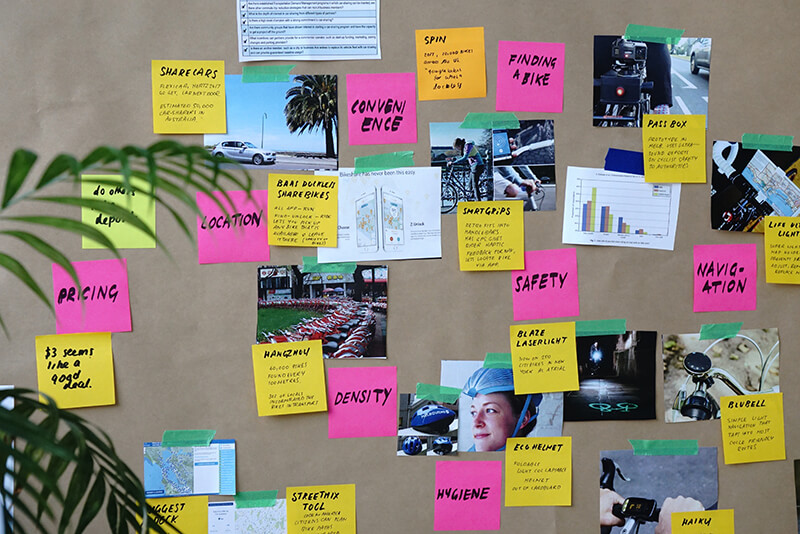
How To Write A Case Study: Topic Samples, Types, and Data Collection
 How to write a case study is an important lesson for students and many professionals. Science and medical professionals, doctors, nurses, medical practitioners, and medical students are the ones who write and read them the most. If you’re a student of science, a medical professional or aspiring to be one, you’ll benefit a lot from this blog. But more than its scientific uses, case studies encompass many other industries and social sciences.
How to write a case study is an important lesson for students and many professionals. Science and medical professionals, doctors, nurses, medical practitioners, and medical students are the ones who write and read them the most. If you’re a student of science, a medical professional or aspiring to be one, you’ll benefit a lot from this blog. But more than its scientific uses, case studies encompass many other industries and social sciences.
Read ahead to learn what a case study is, the uses of case studies, types of case studies and more.
The Basics of Case Studies
It is believed that Pierre Guillaume Frédéric Le Play, a French economist, sociologist, and engineer created the case study methodology in 1829. He created this method to understand the relationship between examining statistical data and family budgeting.
The case study definition is to study in detail certain subjects like people, groups, places, events, and phenomena. A case study today can be used to describe, compare, evaluate, and understand research problems.
Sociologists, psychologists, anthropologists, and other medical professionals now make use of Le Play’s methodology to test their own theories and hypotheses. In more recent years, even industrialists make use of case studies to develop efficiency theories for manufacturing and supply lines.
Learning how to write a case study is important for students because it teaches them how to synthesize information. It’s a great way to practice research skills and analyses.

Types of Case Studies
1. Illustrative Case Studies
According to WAC Clearinghouse, the illustrative case study type is descriptive. It aims to make the “unfamiliar familiar” to the readers by providing a common language regarding the topic of question.
2. Exploratory Case Studies
Exploratory case studies come before a larger scale investigation and are very condensed. According to Business Research Methodology, this type of case study aims to answer “what” or “who”. An exploratory case study’s other basic purpose is to uncover the type of measurement before the main investigation. It’s important to note not to take the initial findings as a final discovery regardless of how convincing they could be. Doing this will result in premature conclusions.
3. Cumulative Case Studies
A cumulative case study contains an aggregation of data from across several sources and ranging from different time periods. The purpose of gathering this data is to allow for new generalizations without the added cost of conducting a new study.
4. Critical Instance Case Studies
Critical instance case studies aim to determine the case and consequences by investigating an event or phenomenon. A critical case study attempts to decipher a single occurrence without making generalizations.
5. Descriptive Case Studies
This type of case study basically explains the study. Descriptive case studies aim to identify the connection between the subject matter and a specific theory. The study concludes after the connection is established and it suggests how to further the study.
6. Intrinsic Case Studies
Commonly used in psychology, intrinsic case studies aim to understand the subject, their history, and how it interacts with their surroundings. In a nutshell, intrinsic case studies learn about the subject through its environment. The intrinsic case study is conducted in healthcare, social work, and sociology.

Case Study Topics and Subjects
In learning how to write a case study essay, you need to know what subject matters you can focus your study on. When choosing a good case study topic you can follow these tips:
Draw from inspiration
Narrow down multiple ideas to get the best one
Look at similar research topics
Identify the common problems and opinions from your subject
Make sure your chosen methodology matches your chosen research topic
Brainstorm with fellow students
Here are the 5 different types of subjects to conduct your case study on:
1. Person
Regardless of the type of case study and methodologies, this type of study only focuses on an individual subject or person.
2. Group
As opposed to the person or individual subject matter, the group subject study focuses on more than one individual. A group of people could be a family, a group of friends, co-workers, staff members in an organization, and more.
3. Location
When a location or place is your case study’s main focus, you can take into account the reasons the place is used or other significances. Locations can be very important focal points in a case study especially if the location is of historical importance.
4. Organization
With an organization as the main focus of a case study, it’s all encompassing in the sense that it also includes the employees or people who work in the event of the organization in the scope of study.
5. Event
A case study with an event as its main subject examines how it affects its environment. The event can be societal or cultural. Historical events in particular make for good case studies because there are plenty of documentation and data sources to gather from. More recent events and phenomenon could entail participant observation that might not always be reputable.

Research Topic Samples
If you’re still stumped on which direction to follow for your case study, here are some examples of case studies to inspire you.
Social Media
● The effects of social media to teenage self perception
● Dangers of online / social media marketing
● The rise of TikTok
● How influencers changed the face of marketing
● Appropriateness of children using social media
Human Rights
● Gender bias in the workplace
● Social injustice against POC in America
● Human rights violations against domestic helpers in the Middle East
● Israel’s apartheid against Palestine
● Misconceptions about the BLM movement
Education
- Montessori schools and their teaching methods
- The challenges of remote / online learning during a pandemic
- Outdated educational methods
- Changes in school practices post pandemic
- Pros and cons of having access to technological devices in school
Psychology and Mental Health
● Misconceptions about the autism spectrum
● Veterans experiencing PTSD
● Correlation between social media and mental health
● Prioritizing mental health in school and the workplace
● Asthenic Syndrome among young professionals
Environment
● Ecological tourism and its pros and cons
● Reversibility of global warming
● Sustainable practices and lowering carbon footprint
● How earthquake safety protocols in Japan work
● How we can promote environmental protection
Marketing
● How marketing methods changed after COVID-19
● Digital vs. Physical marketing
● Common mistakes in brand development
● Brands and cancel culture
● New marketing strategies through social media

Data collection sources
According to Robert Y. Kin who wrote Case Study Research and Applications, there are six data collection methods. Besides these six data collection methods, there are also overriding principles that are important to any type of data collection effort when conducting a case study. These principles include using multiple sources of evidence that converge in similar facts and findings, a case study database with distinct evidence from the final report, and a chain of evidence that links the questions, data collected, and conclusions.
Data collection methods are not limited to these six sources. According to Kin, the complete list is “quite extensive” and includes sources like photos, film, and other more complex sources like psychological testing, proxemics, kinesics, and even life histories.
Documents
Sources in the form of documents are letters, announcements, meeting minutes, written reports, news articles, and such. They can also come in the form of personal documents like diaries, calendars, and notes. The strength of this source of evidence is its stability, meaning it can be reviewed repeatedly. Documents have a broad coverage and are exact. Its weaknesses are difficulty of retrieval, lack of access, or documents that contain reporting bias.
Archival records
Archival records refer to public files like the census and similar statistical data. It also refers to service records, organizational records, geographical documents, and survey data. Similar to documents as a source of evidence, archival records’ strengths are its preciseness in presenting data. Its weakness is a lack of accessibility due to some archival documents being private.
Interviews
Interviews are said to be the most important source of information for case studies. There are two types of case study interviews which are an in-depth interview and a focused interview. For an in-depth interview, you can ask key respondents on their opinion regarding an event and this type of interview can last over a period of time. A focus interview happens within a certain time period in a single sitting and assumes a more conversational type of interview. An interview’s strength is that it’s targeted and insightful, but with poorly structured questions, the interview results can be biased and inaccurate.
Direct observation
Observations during a case study, given that the case isn’t on something historic, rather something that can be observed in the present, can give quite a lot of insight. Through observation, you are able to add new dimensions and context to the event or phenomenon being studied. The strength of direct observation as a data collection source is that it’s based on reality and it covers real-time events. However, its weakness is that it’s time consuming. You also need to factor in reflexivity which means the event or phenomenon might change because it is being observed.
Participant observation
Participant observation means you are not just a passive observer, rather you also play a role in the phenomenon or an actor in the event being studied. An example is being a resident in a neighborhood that is part of the study. Another example is being a staff member in an organization being studied. Similar to the strengths and weaknesses of direct observation, while it can be insightful, there could also be bias based on the manipulation of events by the participant.
Physical Artifacts
Data in the form of physical artifacts could pertain to cultural artifact, a device, instrument, or work of art. Depending on the case, can have the least potential relevance or could be the most important component of the case. While they can be technically or culturally insightful, their selectivity and availability can be scarce.
Theoretical Perspectives
After learning the types of case studies, the different subjects to conduct your case study on, and the data collection methods available, the next step to how to write a case study is deciding on a theoretical perspective. In trying to make sense of an event or phenomenon, they need to be studied through a theoretical lens. There are three different types of theory which are individual, organizational, and social.
● Individual Theory – This type of theory focuses on individual development, cognitive behavior, learning, personality, and disability. It also studies the interpersonal relationships of the subject. Individual theories such as the Social Cognitive Theory or Self Regulation theory work best for the individual subject in a case study.
● Organizational Theory – Organizational theories aim to answer questions regarding the bureaucracy, organizations, institutions and its functions and structures, and organizational performance. Theories under this type like the Classical Organization Theory work best for the group or organization case study subject.
● Social Theory – Social theories focus on development or urban spaces, the behavior of groups, cultural institutions, and even how the marketplace functions. Theories under this type better explain events and phenomena.

How To Write A Case Study: Designing The Study
The next step to how to write a case study after discussing types, subjects, and theoretical perspectives is the actual design of the case study. A properly designed case study allows for a seamless link between the data collected and therefore it is easier to make conclusions. Your research design has to include these four factors:
1. The questions to study
2. Choosing the relevant data
3. Identifying which data to collect
4. Finding a method to analyze data
A case study’s design is the blueprint that covers the beginning of the study where there are initial questions to be answered and the end which should conclude with all the answers from the initial inquiries. Since case studies’ subject matters are diverse, there isn’t actually a universal method to conduct research. However, from the same author who enumerated the six main data collection methods, Robert Y. Kin, he also proposed five basic components of a research design which are:
1. The study questions
2. The study propositions
3. Units of analysis of the study
4. Linking the data to the propositions using logic
5. Interpretation of findings using a criteria
Analyzing The Data
Before you proceed with how to write a case study, an analysis of the data is vital. You’ve chosen your subject, the type of case study to follow, you’ve identified the data collection method, and have even chosen the theoretical framework. Now all you need to do is analyze the data.
According to Shannan Merriam in Case Study Research In Education, there are these observable actions that later become key variables in the study. Here are her suggested analytical frameworks for organizing and presenting data:
1. Role of the participants
2. Analysis of formal and informal exchange between groups
3. Historical framework
4. Thematic analysis
5. Resources
6. Symbolism
7. Incidents that challenge existing beliefs, practices, and values

Parts Of A Case Study Research
A case study essentially has 8 parts that we’ll discuss one by one. You can use how to write a case study in research and for other academic purposes. To successfully write a case study, follow this outline.
1. Executive Summary / Synopsis
An executive summary or synopsis has five main purposes. Mainly, it introduces the topic of the study. This part of the case study also outlines the purpose of conducting the study and you can briefly outline the key issues and findings without concluding first. In the synopsis, you also identify the theory used to explain the subject and summarize the recommendations.
2. Introduction
In this section, you will basically introduce the case study method. Begin building up the case to your readers by outlining the case in order to establish significance. The introduction will also contain the aim of the case study and enumerate the main ideas in the study. Finally in your introduction, you can slowly transition into the findings section by describing the main problem and its significance. By bringing this up, you can ease into the next part and expound on more data.
3. Findings
This is where you present the facts and data gathered in your case study. Whether you’ve chosen an individual, group, location, organization, or event, there are essential details to expound on. First, you need to present the central issues in relation to your subject. Second, you need to provide your reasoning for your choices in course concepts, relevant theory, and support your findings. Third, you should also highlight the underlying assumptions and problems.
The findings section acts as a guide to your readers so it is commonly divided into sections. Make sure to create headings and subheadings that are informative and concise.
4. Discussion
If the findings are main bullet points, the discussion section is where you unpack the layers and explain your findings in detail. In how to write a case study analysis, the discussion section is where you first summarize the major problems. Here is where you identify alternative solutions to the problem. Make sure to clearly outline the proposed solutions and add advantages and disadvantages.
According to Monash University, it can be hard to generalize using the initial findings to other situations because case studies are based on particular situations. Discussions are case-based but they can also share what can be learned from your study’s findings.
5. Conclusion
Similar to essay conclusions, the conclusion section is no place for new information. All data, findings, and analyses belong in the findings and discussion section. What you can do in the conclusion section is to restate the purpose of the study, restate the main points from the findings, discussion, and recommendations part. If you added scope of limitations in the beginning, you can also restate that here.
6. Recommendations
In your recommendations, choose from the alternative solutions you identified and justify your choice. Explain how your chosen solution can fix the problem while integrating theory and practice to it. You can also include an action plan, complete with actors with specific roles within the plan, a step by step instruction, and post assessment plan.
To write a good recommendations section, you can benefit from learning how to write persuasively which is the format you should follow when writing.
7. References
Make sure you properly cite references. Depending on your format or preference, make sure you follow the instructions for your reference list. References can be listed in alphabetical order but to be sure, always follow the recommended format from your professor and don’t forget to double check instructions.
8. Appendices
Appendices are any additional support to your findings. If necessary, attach the original data relating to your analyses. Your appendices can include charts and other data documents that have been listed in the possible data collection methods.
Writing For Your Audience
When writing your case study, your regular readers aren’t the only people to consider your “stakeholders”. Stakeholders are other people who might benefit or learn from your case study. These are the people who might be impacted by your study or follow the recommendations laid in your study.
Just like writing a persuasive type of essay, you need to tailor your language, tone, word choice, and writing style to match your readers. For example, if your case study is written for important organizations, you should follow formal writing guidelines.
Here are some questions to consider as you write your case study:
● Who are my readers? What do my readers benefit from reading my case study?
● What do my readers or stakeholders need, prefer, or expect from my study?
● How can I clearly communicate the data to my readers?
● How will my study impact my stakeholders’ work?
● Have I clearly defined technical terms to the readers?

Getting Professional Writing Help
Case studies are quite technical and we understand how difficult it is to do. Not only after all are you tasked with writing, the report also comes with conducting a study. If you are too swamped with other responsibilities or just find it too challenging to learn how to write a case study, Homework Help USA is your solution!
With over a decade of experience in helping students with custom written homework, Homework Help USA assists in essay writing, math solutions, PowerPoint presentations, and more. Get the best case study write-up that money can be and make your essay order now! Our operations team will match your unique homework needs with the right writer for the job, or for an additional fee, you can get to work with one of our top writers!
Get help only from the most reliable Homework Help platform online!
Share:

